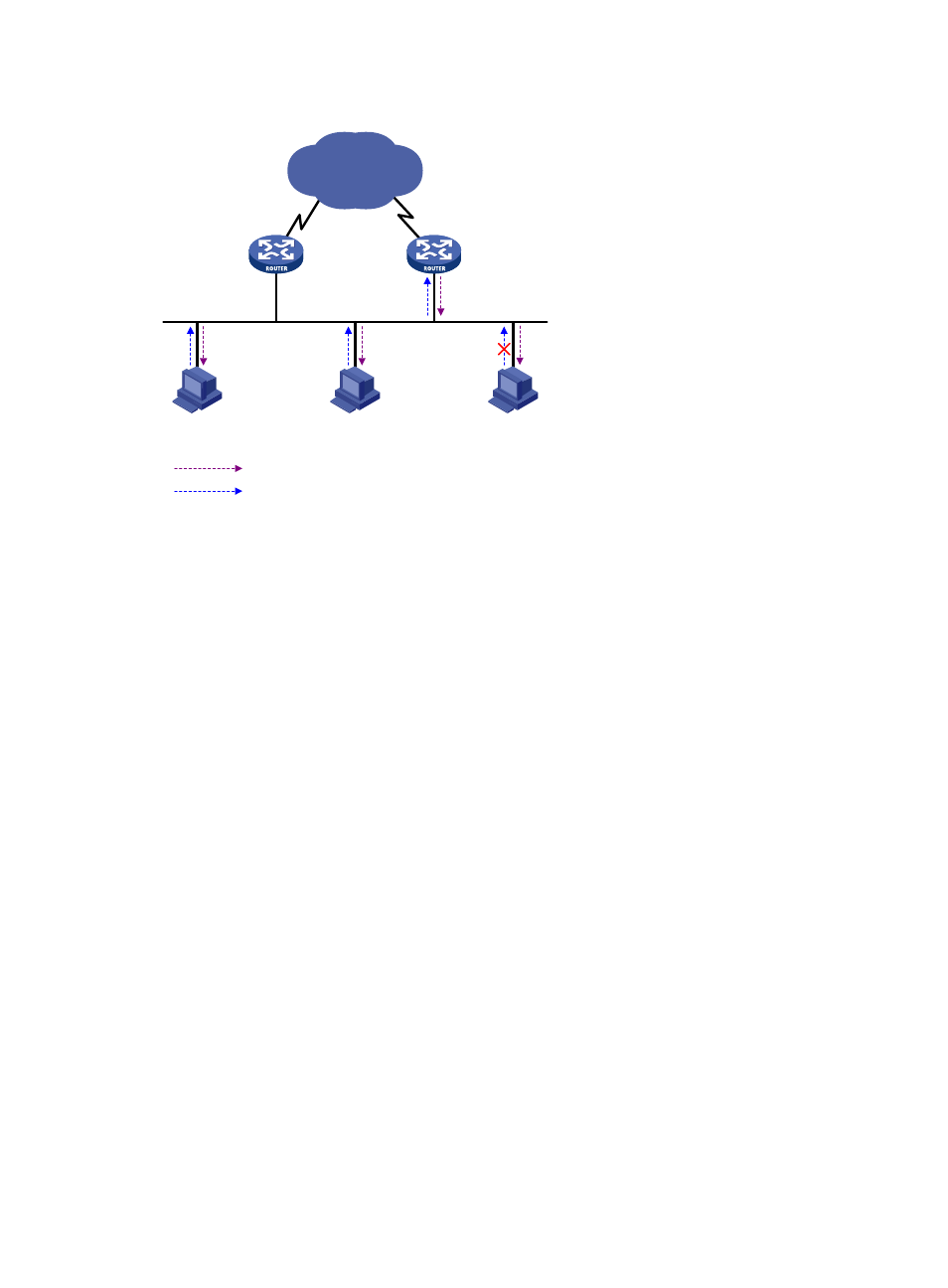H3C Technologies H3C S12500 Series Switches User Manual
Page 98

82
Figure 30 IGMP queries and reports
As shown in
, assume that Host B and Host C receive multicast data addressed to multicast
group G1, and Host A receive multicast data addressed to G2. The following process describes how the
hosts join the multicast groups and how the IGMP querier (Router B in the figure) maintains the multicast
group memberships:
1.
The hosts send unsolicited IGMP reports to the addresses of the multicast groups that they want to
join, without having to wait for the IGMP queries from the IGMP querier.
2.
The IGMP querier periodically multicasts IGMP queries (with the destination address of 224.0.0.1)
to all hosts and routers on the local subnet.
3.
After receiving a query message, Host B or Host C (the delay timer of whichever expires first) sends
an IGMP report to the multicast group address of G1, to announce its membership for G1. Assume
that Host B sends the report message. After receiving the report from Host B, Host C (which is on
the same subnet as Host B) suppresses its own report for G1, because the IGMP routers (Router A
and Router B) have already known that at least one host on the local subnet is interested in G1. This
mechanism (known as "IGMP report suppression") helps reduce traffic on the local subnet.
4.
At the same time, because Host A is interested in G2, it sends a report to the multicast group
address of G2.
5.
Through the query/report process, the IGMP routers determine that members of G1 and G2 are
attached to the local subnet, and the multicast routing protocol (PIM, for example) that is running
on the routers generates (*, G1) and (*, G2) multicast forwarding entries. These entries will be the
basis for subsequent multicast forwarding, where the asterisk (*) represents any multicast source.
6.
When the multicast data addressed to G1 or G2 reaches an IGMP router, because the (*, G1) and
(*, G2) multicast forwarding entries exist on the IGMP router, the router forwards the multicast
data to the local subnet, and then the receivers on the subnet receive the data.
IGMPv1 does not specifically define a leave group message (often called a "leave message"). When an
IGMPv1 host is leaving a multicast group, it stops sending reports to the address of the multicast group
that it listened to. If no member exists in a multicast group on the subnet, the IGMP router will not receive
any report addressed to that multicast group. In this case, the router will delete the multicast forwarding
entries for that multicast group after a period of time.
Query
Report
DR
Host A
(G2)
Host B
(G1)
Host C
(G1)
Ethernet
Router A
Router B
IP network